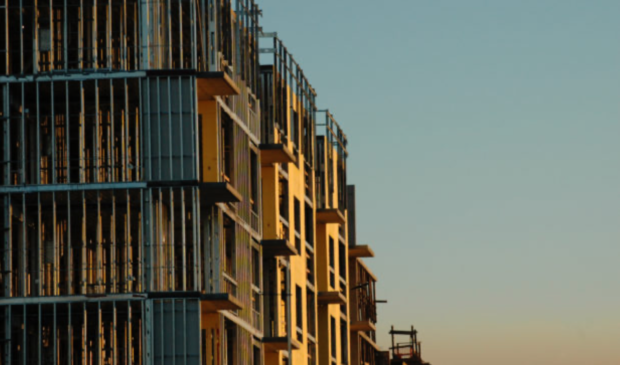Council relaxes compatibility requirements along selected corridors
Monday, December 5, 2022 by
Chad Swiatecki City Council has approved changes to building compatibility standards that will allow for some increases in housing density along a handful of transit corridors. The ordinance amending City Code Title 25 was approved Friday, modifying parking requirements and allowing for increased building heights closer to single-family homes located on the targeted corridors, with some entitlements for greater height given to projects that include affordable housing.
The ordinance, which had more than 30 supporting documents and proposed amendments, includes many of the changes recommended recently by the Planning Commission. In recent weeks, city staff and the Planning Commission have said the adjustments initiated by Council this summer don’t go far enough to reduce planning and approval barriers to building more housing in areas where it is most needed.
The change received the minimum nine votes needed for significant changes to building practices, with Council Member Kathie Tovo abstaining and Vanessa Fuentes off the dais.
Compatibility rules limit the height of buildings near single-family homes, making many areas undevelopable for other uses and limiting the amount of housing that can be built while the city is in the midst of an affordability crisis. Austin’s compatibility laws are seen as among the most restrictive in the state.
Council Member Natasha Harper-Madison was the final vote in favor of the ordinance, though she objected to the exclusion of major roads and transit corridors in West Austin. She argued that all other areas of the city will have to absorb the pressure for more housing and possible displacement as existing properties in those regions will be redeveloped while less dense neighborhoods in West Austin remain untouched.
“This item as designed is inequitable. The exclusion of corridors in high-income areas was purposeful and by Council direction and we are left with no option to address these inequities today,” she said. “The fact that a well-intentioned and necessary reform to our desperately outdated Land Development Code has been warped to once again exclude West Austin and other high-income areas from this much-needed housing conversation is sadly not at all surprising.”
While introducing the ordinance, Mayor Pro Tem Alison Alter said the changes engineered during discussions over the summer had the subtext of needing to draw the needed supermajority of the Council. Anticipating the criticism that compatibility requirements still remain in place in too many areas of the city, she said Council members can continue work next year on more actions to add housing throughout the city.
“I believe the mayor and I have demonstrated that broad and diverse caucuses representing multiple corners of the city can work together to achieve results,” she said. “It may not be what any one of us would have crafted on our own, but rather than lamenting whether this proposal is only half a loaf, we should remember that half a loaf is still a lot of bread and we can always continue to work to make our city more livable and more affordable.”
Council Member Chito Vela, who offered two failed amendments including one that would give the Planning Commission the ability to approve compatibility waivers for individual properties, said the slowdown in building caused by rising interest rates gives the city a chance to address its permitting and approval backlog and add more housing in the interim.
“The one thing that really motivates me now is we are starting to see a slowdown in building permits and housing,” he said. “We really need to build through that slowdown if we’re going to at all tackle our lack of housing supply. And to whatever marginal way these changes can improve that, maybe it creates some additional incentives and opportunities for folks to add supply.”
Photo made available through a Creative Commons license.
The Austin Monitor’s work is made possible by donations from the community. Though our reporting covers donors from time to time, we are careful to keep business and editorial efforts separate while maintaining transparency. A complete list of donors is available here, and our code of ethics is explained here.
You're a community leader
And we’re honored you look to us for serious, in-depth news. You know a strong community needs local and dedicated watchdog reporting. We’re here for you and that won’t change. Now will you take the powerful next step and support our nonprofit news organization?











